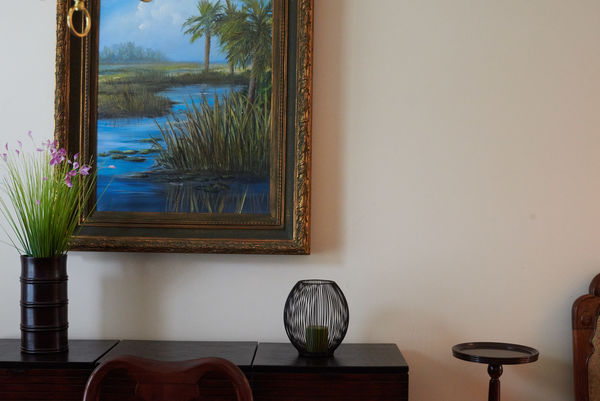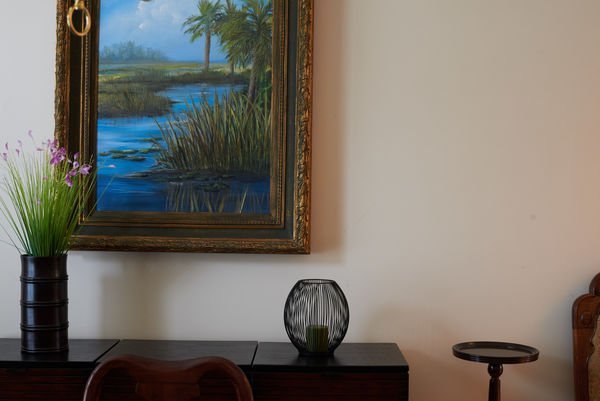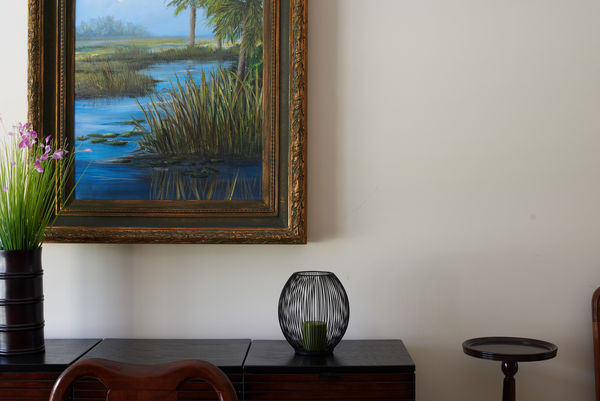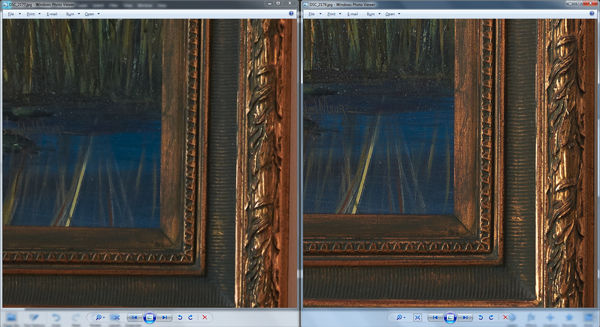Is ETTR/EBTR a Concept Whose Time has Passed?
Dec 23, 2016 19:15:17 #
amfoto1 wrote:
The same thing happens today as happened in the pa... (show quote)
Before I ever heard of ETTR I already knew better than to blow the highlights.
Since I already knew that my cameras could get noisy above ISO 800, I also avoided ISO 1600 and above. Nevertheless, I still have to look very close to find noise in higher ISO images from a D610 or A7 II.
The third thing I knew was that, if there was going to be any noise, it would occur in the darkest portions of the image. But the darkest portions are seldom the important parts of my images and the easiest to fix.
I and most other serious photographers already know how to minimize noise and maximize DR. All ETTR/EBTR provides us with is a means to work around a really unusual circumstance like the one described by TriX which I already addressed.
Dec 23, 2016 20:28:04 #
selmslie wrote:
Before I ever heard of ETTR I already knew better ... (show quote)
Just like color reversal film . . . just sayin'
Dec 23, 2016 21:26:51 #
selmslie wrote:
Only then would you actually need to use everythin... (show quote)
Thanks for the clarification Scotty. Unfortunately, I often find myself in this situation (an indoor, low available light shot that requires both high shutter speed and decent DOF where flash is not an option, and I need all the DR I can squeeze out).
Dec 23, 2016 23:55:44 #
I enjoyed reading this highly instructive interchange. Thank you all.
Dec 24, 2016 08:08:32 #
cmc4214
Loc: S.W. Pennsylvania
RRS wrote:
Scotty this is interesting and makes one think but... (show quote)
It may be a repeat, but I did not see the first post, so I am learning a lot here
Dec 24, 2016 08:25:12 #
cmc4214
Loc: S.W. Pennsylvania
LoneRangeFinder wrote:
I enjoyed reading this highly instructive interchange. Thank you all.
Me too!... Thanks every one for a friendly discussion, I learned a lot here today
Dec 24, 2016 09:39:44 #
catchlight..
Loc: Wisconsin USA- Halden Norway
If you read the photographylife article it comes to almost th exact same conclusion. Thanks Selmslie...If you inch to the edge of the cliff you will most likely fall. Data lost leaves you with nothing. I personally think if you bracket you can credibly argue the benefits. I regularly reduce the shadows and combine images in post without issues but I do see the quest for a way to improve the data quality credible. It would be nice to see more photo examples and less scientific fact finding...😀
Dec 24, 2016 09:58:04 #
catchlight.. wrote:
If you read the photographylife article it comes to almost th exact same conclusion. Thanks Selmslie...If you inch to the edge of the cliff you will most likely fall. Data lost leaves you with nothing. I personally think if you bracket you can credibly argue the benefits. I regularly reduce the shadows and combine images in post without issues but I do see the quest for a way to improve the data quality credible. It would be nice to see more photo examples and less scientific fact finding...😀
Yes, bracketing can save the day. All you need to do is select the easiest exposure to develop and delete the others.
It's a lot easier than agonizing over exposure and ISO settings. A change of +/- one stop in post processing is easy and effective.
It's false economy to try and get one exposure right when you have gone to a lot of trouble and expense to get to the scene you want to capture.
Of course, there are cases where bracketing for exposure will not work - sports, action, flying birds, etc. But those are cases where you will probably learn with practice to find the optimal exposure and ISO.
Dec 24, 2016 10:15:51 #
catchlight..
Loc: Wisconsin USA- Halden Norway
Exactly... Has anyone considered using a drone with a flash unit triggered in ETTL... sneaking up on the bird might be tough but there are some pretty fast ones available and birds will eventually tire out...Just an idea I've been kicking around... 🤔 Hmmmmm
Dec 24, 2016 12:26:26 #
Uuglypher wrote:
See Dave's post at http://www.uglyhedgehog.com/t-430379-6.html#7247576... In fact, Selmslie would like to be forgotten that he, himself, has submitted his own images, for some reason made with ISO 1600, to show (presumably) no beneficial effect of 2 stops of EBTR. what they proved was critical examination, even of an on-line image, can confirm the value of EBTR. ...
Nice try, Dave, but you did not look very closely at the two images in that example. You didn't even label them carefully. The image on the left should show the shutter speed as 1/25, not 1/125.
The difference between 1/25 sec and 1/4 sec is 2-2/3 stops, 6.25x as many photons falling on the sensor. That's the reason for the slight reduction in noise.
But you left out the clincher - the ISO 100 image. I have attached all three full images for anyone to open and view at 100%.
Note that according to DxOMark, the D610 has a DR of 14.36 at ISO 100 and 9.23 at ISO 6400. It also has a S/N ratio for middle (18%) gray of 45.5 dB at ISO 100 and 28 dB at ISO 6400.
So that clearly shows that, if you want to access the maximum dynamic range of the camera, you need to use base ISO. When you use ISO 6400 you give up over 5 stops of Ev and over 17 dB of S/N. You are using only 1.56% of the sensor's DR.
The ISO 100 image has much cleaner details all over and it got only 1 stop more exposure than the ETTR image.
Thanks for giving me a reason to prove my point.
Dec 24, 2016 12:49:35 #
Dec 24, 2016 14:06:17 #
LoneRangeFinder wrote:
Thanks for adding the last image with base ISO. Fairly instructive.
You can see that the final image is nowhere close to being ETTR. If the second image is ETTR then the third image is about 5 stops to the left of ETTR.
Why does this work? It's because the DR of the sensor at ISO 100 far exceeds the narrow DR of the scene. That's a lot of latitude.
It also shows why Dave cannot produce a credible demonstration. It was easy for me to do so.
Dec 24, 2016 14:36:51 #
selmslie wrote:
You can see that the final image is nowhere close to being ETTR. If the second image is ETTR then the third image is about 5 stops to the left of ETTR.
Why does this work? It's because the DR of the sensor at ISO 100 far exceeds the narrow DR of the scene. That's a lot of latitude.
It also shows why Dave cannot produce a credible demonstration. It was easy for me to do so.
Why does this work? It's because the DR of the sensor at ISO 100 far exceeds the narrow DR of the scene. That's a lot of latitude.
It also shows why Dave cannot produce a credible demonstration. It was easy for me to do so.
Is it also your contention that it is the newer DSLRs that have antiquated the concepts expressed by Dave with their increased DR? I remember a lot of the early articles comparing the DR of film to digital and as I recall film was superior.
Dec 24, 2016 16:05:09 #
Uuglypher wrote:
Well, selmslie claims the left image was actually @ 1/25 sec...that makes a 3 1/3 stop difference, (>1/12>1/6>1/3>1/4) which makes the difference in noise and shadow detail (due to increased tonal spectrum...) all the more interesting.
Thanks, Scotty, that makes the image quality difference all the more instructive. Use of more DR is obviously a wise move!
Thanks, Scotty, that makes the image quality difference all the more instructive. Use of more DR is obviously a wise move!
That explains a lot. I guess math is not Dave's strong suit - the ratio of 1/4 to 1/25 is 6.25 or 2-2/3 stops. But why get hung up on trifles. Not a word about the elephant in the room - the ISO 100 image?
Incidentally, the difference between ISO 100 and ISO 6400 is 6 stops. The difference between 1/4 and 1/2 sec is 1 stop.
Look at the surface of the painting.
Dec 24, 2016 18:18:19 #
LoneRangeFinder wrote:
Is it also your contention that it is the newer DSLRs that have antiquated the concepts expressed by Dave with their increased DR? I remember a lot of the early articles comparing the DR of film to digital and as I recall film was superior.
Yes, modern digital cameras now exceed the DR of film at low ISO and reach much higher ISO settings.
However, the best digital images are still produced at low ISO, in the 100-800 range.
Film still has the edge at extremely low ISO, 4-50. It's still more practical for medium and large format. And it's still more fun.
If you want to reply, then register here. Registration is free and your account is created instantly, so you can post right away.







